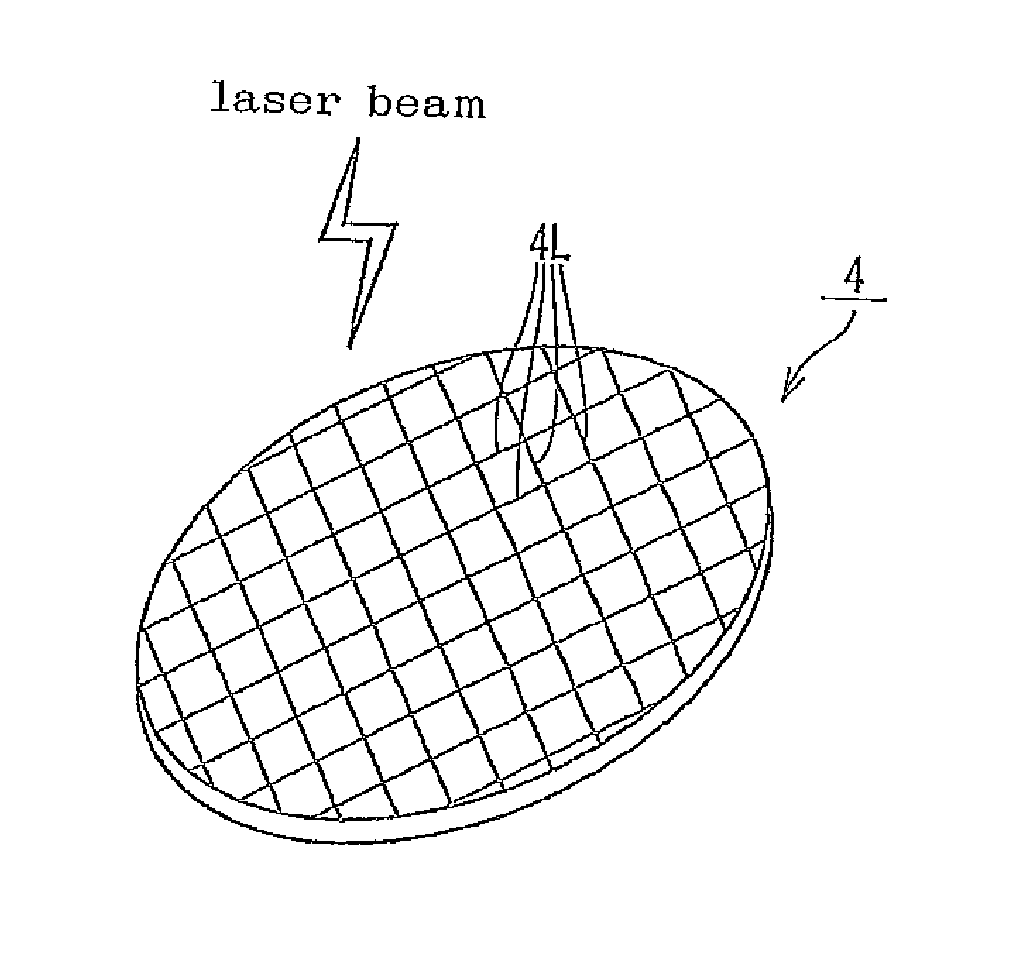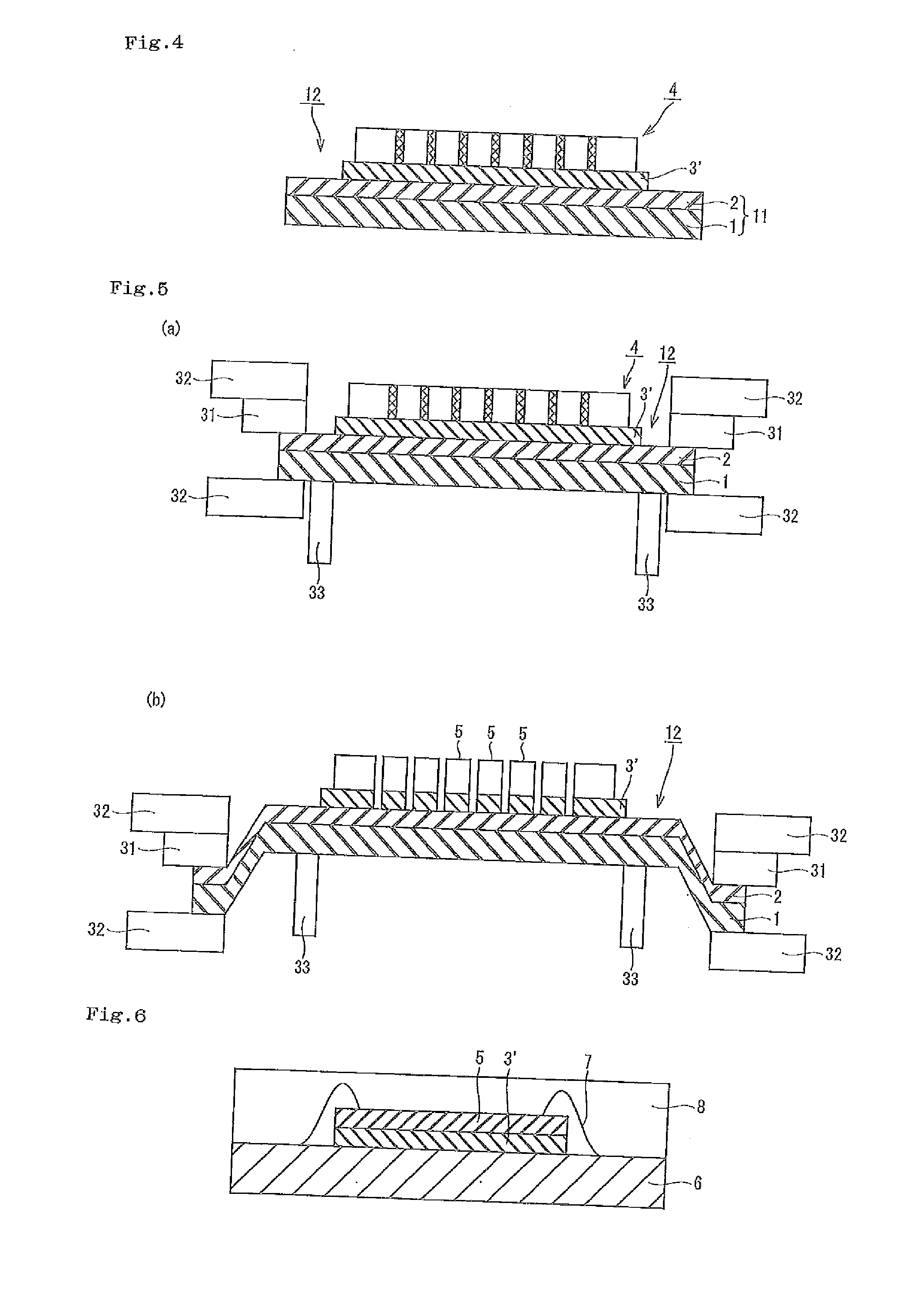Dicing die bond film
a die-cutting and bonding technology, applied in the direction of heat-activated film/foil adhesives, film/foil adhesives, transportation and packaging, etc., can solve the problem of the circuit on the semiconductor chip being broken, and achieve good tackiness and workability
- Summary
- Abstract
- Description
- Claims
- Application Information
AI Technical Summary
Benefits of technology
Problems solved by technology
Method used
Image
Examples
example 1
[0136]An adhesive composition solution having a concentration of 23% by weight was obtained by dissolving the following (a) to (g) in methylethylketone.
[0137](a) 100 parts of an acrylic ester polymer containing ethyl acrylate-methyl methacrylate as a main component (Paracron W-197CM manufactured by Negami Chemical Industries Co., Ltd.)
[0138](b) 228 parts of an epoxy resin 1 (Epicoat 1004 manufactured by Japan Epoxy Resin Co., Ltd.)
[0139](c) 206 parts of an epoxy resin 2 (Epicoat 827 manufactured by Japan Epoxy Resin Co., Ltd.)
[0140](d) 466 parts of a phenol resin (Milex XLC-4L manufactured by Mitsui Chemicals, Inc.)
[0141](e) 400 parts of a spherical copper powder 1 (SF-Cu manufactured by Nippon Atomized Metal Powder Corporation, average particle size 10 μm)
[0142](f) 267 parts of a spherical copper powder 2 (SF-Cu manufactured by Nippon Atomized Metal Powder Corporation, average particle size 6 μm)
[0143](g) 3 parts of a curing catalyst (C11-Z manufactured by Shikoku Chemicals Corpora...
example 2
[0145]In Example 2, a die bond film B according to the present example was produced in the same manner as in Example 1 except the spherical copper powder 1 of (e) and the spherical copper powder 2 of (f) were changed to 367 parts of a spherical silver powder 1 (SFR-AG manufactured by Tokuriki Chemical Research Co., Ltd., average particle size 5 μm) and 300 parts of a spherical silver powder 2 (AgC-156I manufactured by Fukuda Metal Foil & Powder Co., Ltd., average particle size 3 μm).
example 3
[0146]In Example 3, a die bond film C according to the present example was produced in the same manner as in Example 1 except the spherical copper powder 1 of (e) and the spherical copper powder 2 of (f) were changed to 2502 parts of a spherical copper powder 1 (Cu-HWQ manufactured by Fukuda Metal Foil & Powder Co., Ltd., average particle size 5 μm) and 1500 parts of a spherical copper powder 2 (Cu-HWQ manufactured by Fukuda Metal Foil & Powder Co., Ltd., average particle size 1.5 μm).
PUM
| Property | Measurement | Unit |
|---|---|---|
| volume resistivity | aaaaa | aaaaa |
| volume resistivity | aaaaa | aaaaa |
| tensile storage modulus | aaaaa | aaaaa |
Abstract
Description
Claims
Application Information
 Login to View More
Login to View More - R&D
- Intellectual Property
- Life Sciences
- Materials
- Tech Scout
- Unparalleled Data Quality
- Higher Quality Content
- 60% Fewer Hallucinations
Browse by: Latest US Patents, China's latest patents, Technical Efficacy Thesaurus, Application Domain, Technology Topic, Popular Technical Reports.
© 2025 PatSnap. All rights reserved.Legal|Privacy policy|Modern Slavery Act Transparency Statement|Sitemap|About US| Contact US: help@patsnap.com



